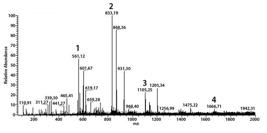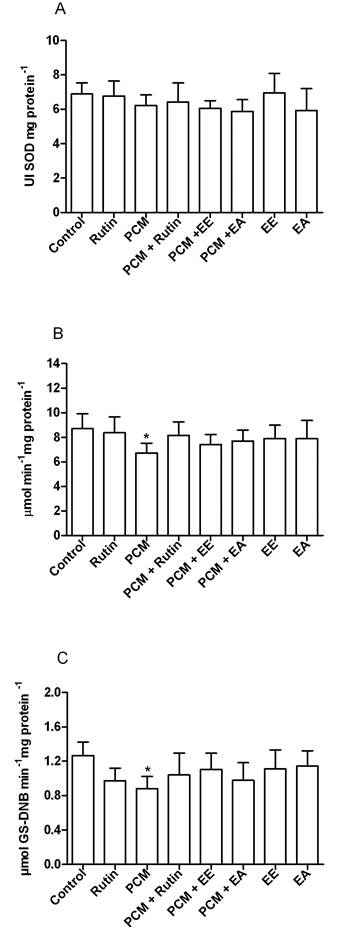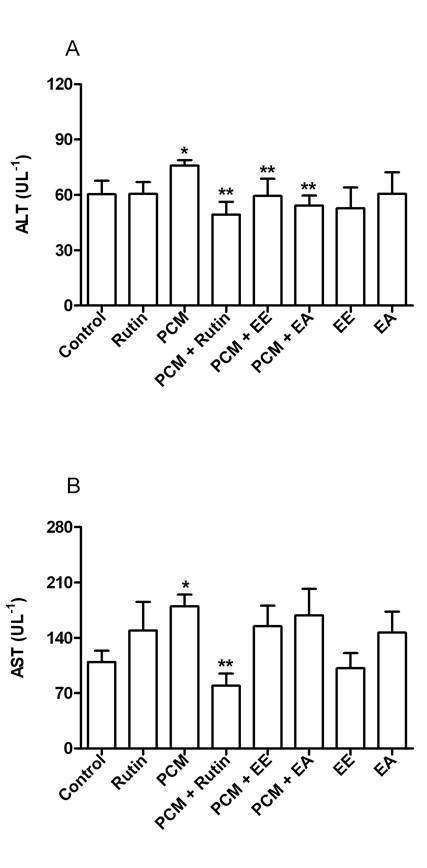ABSTRACT
The properties of oil-resin of copaiba, Copaifera multijuga are commonly mentioned in the literature, but there are few studies on extracts from its stem bark. We evaluated the antioxidant effects of ethanolic (EE) and ethyl acetate (EA) crude stem bark extracts from copaiba and compared them to rutin in a paracetamol (PCM)-induced oxidative stress model in mice. All test comparisons differed significantly. Hepatic catalase (CAT) and glutathione-S-transferase (GST) activity decreased in the PCM group, and there was an increase of protein carbonyls in the liver, kidney and brain. However, the protein carbonyls decreased in the liver for the PCM + EE group, in the kidneys for the PCM + EA and PCM + Rutin groups, and in the brain for all treatments. Hepatic GSH decreased in the PCM group and increased in the PCM + EE group. The extracts showed a positive effect on ascorbic acid (ASA), since they were able to restore the levels of parameters that had been changed by PCM. There was an increase of ALT and AST activity in the plasma within the PCM group. Even though ALT decreased in the PCM + Rutin, PCM + EE and PCM + EA groups, EE and EA did not have an effect on AST. The strongest antioxidant effect was observed for EE, due to the presence of the phenolic compounds epicatechin and epiafzelechin, as well as the highest concentration of total phenols and an excellent antioxidant potential observed in the DPPH· test.
KEYWORDS:
oxidative stress; acute intoxication; acetaminophen; copaiba

 Thumbnail
Thumbnail
 Thumbnail
Thumbnail
 Thumbnail
Thumbnail
 Thumbnail
Thumbnail



